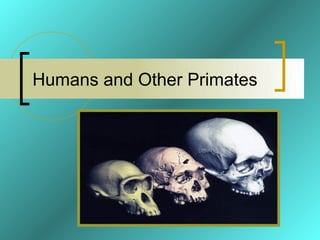
**Great Apes and Humans: Uncovering the Origins of Cognitive Language Abilities**
In an innovative finding that explores the evolutionary foundations of human cognition, researchers have disclosed that great apes visually process social interactions in manners that closely mirror adult human behavior. These revelations, featured in *PLOS Biology*, emphasize that essential cognitive mechanisms linked to language evolution likely existed long before humans started to communicate verbally.
### **Tracing the Origins of Comprehension**
Under the leadership of Dr. Vanessa Wilson from the University of Neuchatel, Switzerland, a global research team carried out an investigation at the Basel Zoo to examine how great apes and humans visually interpret social interactions. The participants included 14 adult humans, five chimpanzees, two gorillas, and two orangutans, all of whom viewed 84 brief video clips showcasing a range of interactions. To enhance their examination, the team also involved 29 six-month-old human infants in the research.
Utilizing advanced eye-tracking technology, researchers meticulously recorded how each group interpreted the events. Their results illuminate how humans’ distinct capacity to comprehend social roles and causal relations may have evolved from shared cognitive structures with their great ape counterparts.
### **A Common Cognitive Framework Across Species**
The research indicated that both great apes and adult humans concentrated on “agent-patient relationships”—the interaction between the action-doer (agent) and the recipient (patient). For instance, a clip of a cat pursuing a mouse led both apes and humans to shift their attention between the cat (agent) and the mouse (patient), demonstrating a keen understanding of cause-and-effect in social interactions.
Despite these similarities, significant differences were noted. Apes appeared to pay more attention to background details in the videos, while adult humans nearly exclusively focused on the primary actors. Nonetheless, common priorities emerged in specific situations; for instance, when food was presented in the videos, both species focused on the agent, indicating evolutionary links related to survival instincts.
Interestingly, the research showed that six-month-old infants approached the visuals differently, concentrating mainly on background elements instead of the agent-patient relationships. This differentiation from adult humans suggests developmental changes in cognitive focus from infancy to adulthood.
### **Implications for Language Development**
The results offer strong evidence for a shared cognitive mechanism that facilitates “event role tracking”—the capability to monitor interactions between participants in a scene. Dr. Wilson states, “Our study implies that event-role tracking evolved well before human speech. The fundamental cognitive architecture that enables humans to structure language may trace its evolutionary roots back to our common ancestors with great apes.”
This insight addresses a long-standing inquiry regarding human language evolution: What distinguishes humans from other species that share this cognitive framework? While great apes undoubtedly possess the mental ability to analyze actions into meaningful relationships, this skill alone does not account for the emergence of intricate language systems.
Researchers suggest that the divide between event role tracking and human linguistic ability lies in additional, distinctly human cognitive developments. These may encompass imagination, the ability for symbolic thought, and unparalleled levels of social collaboration. Future investigations seek to reveal the evolutionary link that facilitated the transition from shared cognitive competencies to advanced spoken and written language.
### **Key Insights**
– Both great apes and humans are adept at interpreting agent-patient relationships, forming a cognitive basis for understanding social interactions.
– In contrast to human adults, apes tend to concentrate more on background elements in scenes, highlighting subtle attentional differences.
– Six-month-old human infants primarily focus on background aspects, indicating that event role tracking emerges over time.
– These discoveries stress that event role tracking was present in the common ancestors of humans and great apes, providing vital insights into how early cognitive tools laid the groundwork for language evolution.
### **Looking Forward**
This investigation paves the way for new insights into the developmental and evolutionary roots of human language. By identifying shared capabilities between humans and great apes, researchers can now concentrate on uncovering the unique elements that differentiate our species in cognitive and linguistic domains.
Language has historically been one of the defining attributes of human identity. Nonetheless, this research highlights that its origins are much deeper, intertwined in the shared lineage we have with our closest relatives in the animal world.
—
### Glossary
**Agent-Patient Relationship**: The interaction between the initiator of an action (agent) and the one affected by it (patient).
**Event Role Tracking**: The ability to mentally trace roles played by participants in an interaction or event.
**Visual Fixation**: The specific point where a subject’s gaze is directed during observation, measured using eye-tracking technology.
—
### Quick Quiz
**1. How did six-month-old infants’ focus differ from adults and apes?**
– Infants concentrated primarily on background details, unlike adults and apes, who concentrated on the main